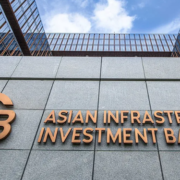Argentina continues to bet on nuclear plants with Chinese financing
The First Integrated Five-Year Plan signed between Argentina and China for Infrastructure Cooperation (2017-2021) contains 16 projects to be developed in the country. Within these are the construction of two nuclear power plants. The choice of building nuclear plants, instead of investing in wind and solar energy, raises certain concerns about the risks of nuclear energy.
“Below, we offer a google translate version of the original article in Spanish. This translation may not be accurate but serves as a general presentation of the article. For more accurate information, please switch to the Spanish version of the website. In addition, feel free to directly contact in English the person mentioned at the bottom of this article with regards to this topic”.
The strengthening of the Sino-Argentine relationship was observed with the signing of the First Five-Year Plan (2017-2021) between the two actors, which includes 16 projects to be carried out in the country with Chinese financing. One of the projects that generates economic, but above all environmental, questions is the construction of two nuclear power plants, Atucha III and IV.
Around nuclear power plants there are opinions for and against. There are defenders of this type of energy due to low emissions, however, there is an increasing number of opponents of nuclear energy due to its impacts on the environment, the risk it means and how expensive it is in relation to wind and solar energy .
Our country has three nuclear reactors, the first, Atucha I, was built in 1974; the second plant is that of Embalse that began operating in 1984 and the third plant was Atucha II, which began operating in the national system as of 2014. Nuclear-type energy represents 6% of the country’s energy. Energy Matrix.
The agreement for the construction of two nuclear power plants dates from the government of Cristina Kirchner, who agreed to build with China in 2015. When Macri took over as president, the effectiveness of this type of energy was questioned, however it was ratified the agreement with China on the construction of nuclear power plants (Atucha III and IV). Despite this, due to the economic crisis that the country is going through, the government had to choose to build a single plant so that the size of the loan is not so large and the country can face it.
Thus, the Atucha III nuclear power plant will be built, which will add 745 megawatts to the network and will be located in the town of Lima, Province of Buenos Aires. The contract for the construction of this plant includes a loan from China for $ 10 billion, which covers 85% of construction costs; the rest will be invested by Argentina.
Initially, when the agreement was signed, the governments of both countries expressed the importance of signing the contracts before September 2017, and, consequently, begin the construction of one of the plants that same year and the second in 2019. However, none of these events happened.
This Five-Year Plan aims to increase complementarity, cooperation and benefits in the infrastructure sector, contributing to the development of bilateral economic relations and the nations of both countries.
Chinese financing has grown markedly in Latin America and the Caribbean, and Argentina has not been the exception to this growth. Relations between the two countries have evolved in such a way that China is important as a bilateral lender, where the largest amount of loans has been allocated to infrastructure and energy projects.
From Fundeps a request for information was made at the beginning of the year to the National government for the First Five-Year Plan between China and Argentina, emphasizing the construction of nuclear power plants. The main questions that were consulted were about the modalities and characteristics of the financing that the Argentine government agreed to finance the works contemplated in the First Five-Year Plan; the dependencies, officials and other actors involved.
Regarding the construction of nuclear power plants, a topic of relevance in the request for information, the state of construction of nuclear power plants was requested, what have been the social and environmental guidelines of the institutions involved in the project, which were the preselected and selected places to carry out the construction, the studies that were carried out to select the place of construction of the plants and, if there has been an environmental impact assessment (EIA) as if there were instances of citizen participation.
Although the request was answered late (July), the questions asked to the Ministry of Energy and the Ministry of Finance were not effectively answered. Just to mention some questions of the response to the request, the EIA documents were not provided, much less the studies carried out to select Lima, (province of Buenos Aires) as the place for the construction of the nuclear power plant. In general, the answers to the questions asked were brief, and most, if not all, did not provide the data requested by Fundeps.
In terms of access to information at the national level, progress has been made, as citizens can request information through the web. However, much work remains to be done in the field of open government, since the answers to the requests for information elude the root of the question being asked. Not much information is available and, neither, when requesting the responsible entities, the information that is required is obtained.
More Information
- China-Argentina Five-Year Plan Analysis
- Commitment-Human Rights-China
- Projects with Chinese financing in Argentina
- Expansion of nuclear power plants
Author
Gonzalo Roza
Contact







